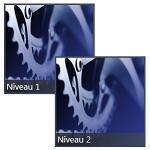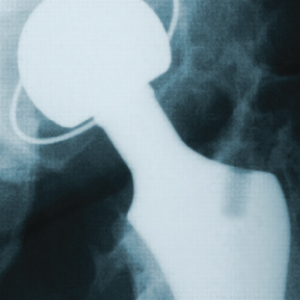Summary of available data
The data available in GRANTA EduPack is grouped into databases. There are four types of database available to use with GRANTA EduPack:
- Databases supplied with different editions of GRANTA EduPack.
- Custom databases created by Granta and other software users to use as part of their research, or just for fun. These can be downloaded from the Granta's Education Hub, and added to GRANTA EduPack.
- Extra Databases that Granta are currently working on. These are made available in return for feedback.
- GRANTA EduPack databases that contain industrial reference data.
You can find more information about each edition of GRANTA EduPack and the tools within it by reading the white papersreading the white papers.
 |
The CES EduPack Eco
Audit Tool Image courtesy of National Institute for Aviation Research, Wichita State University, USA |
 |
The treatment of Durability
in CES EduPack Author:Mike Ashby |
 |
The CES EduPack Bioengineering
Database Authors:Mike Ashby, Ana Pereira-Medrano |
 |
The CES EduPack Materials
Science and Engineering Package Authors:Mike Ashby, Hannah Melia, Magda Figuerola, Lee Phillips and Stéphane Gorsse |
 |
Materials and Product
Design Author:Mike Ashby |
 |
The CES EduPack Database
for Architecture and the Built Environment Authors:Mike Ashby, John Fernandez, and Aileen Gray |
 |
Advanced Industrial
Case Studies in Transportation with CES EduPack and CES Selector Author:Arlindo Silva |
 |
The
Elements Database: A White Paper Authors: Claes Fredriksson, Kyozo Arimoto, Mike Ashby |

|
Materials
and Sustainable Development (1): Assessing Sustainable Developments Authors: Mike Ashby and Didac Ferrer |
 |
Teaching
Engineering Materials: CES EduPack Authors: Mike Ashby, David Cebon, Arlindo Silva |
 |
Teaching Materials and Processes to First and Second Year Students Author: Mike Ashby |
 |
Author: Mike Ashby |
The following databases are available in different editions of GRANTA EduPack.
Contents
Main databases
Level 1
Including Niveau 1, Nivel 1, and Ebene 1

Level 2
Including Niveau 2, Nivel 2, and Ebene 2

This database is aimed at more advanced introductory courses that involve project work. It contains a comprehensive set of mechanical, thermal and electrical properties, as well as Eco Properties and Durability Information, for more than 100 common materials. Each material is linked to records for processes that are used to shape, join, or finish it. The process records include a simple cost model that allows cost-comparisons between alternative processes. Images are included to engage student interest and help them to identify the information with a real product.
Level 2 Architecture

This database is aimed at more advanced introductory courses that involve project work. It contains more than 120 materials commonly used in Architectural applications, including engineered woods, steels, concretes, bricks, and cements etc. A comprehensive set of mechanical, thermal, electrical, hygro-thermal, acoustic and eco properties are provided along with durability information. The materials are grouped by where in a building they can be used. Each material is linked to records for processes that are used to shape, join, or finish it. Images are included to engage student interest and help them to identify the information with something real.
Level 2 Bioengineering

This database is aimed at more advanced introductory courses in the Bioengineering field. At its core is a comprehensive set of mechanical, thermal, and electrical properties, as well as Eco Properties and Durability Information, for more than 250 common materials. This is supplemented by records on "Bio" materials of all kinds; biological, bio-derived, natural, and bio-medical. The records have extra data on their compatibility with the human body and whether they have been used in medical devices.
The additional Bio-related folders of materials have a description of what that group of materials is all about. Each material is linked to records for processes that are used to shape, join or finish it. The process records include a simple cost model that allows cost-comparisons between alternative processes. Images are included to engage student interest and help them to identify the information with a real product.
Level 2 Sustainability

This database is aimed at more advanced introductory courses that involve project work. It can also be used to introduce sustainability concepts to students who do not study material science, such as economics or business majors. It contains a comprehensive set of mechanical, thermal, optical, electrical, magnetic and environmental properties for over 100 engineering materials. Environmental properties include water usage, carbon footprint, embodied energy, and end of life information. This is supplemented by data on the material’s country of origin and whether the material is considered a critical material, with links to data on the nations where materials come from and the regulations applicable to materials around the world. This helps students to have a rounded view of the sustainability of a technological development. Finally, data tables on energy storage and generation are also included, as energy usage is a key part of the sustainability question.
The Elements

This database provides the fundamental properties of elements across the Periodic Table. This is particularly helpful for materials science courses, physics courses, or engineering courses with more materials depth.
It contains 149 records for 118 elements (some have two or three allotropic forms requiring separate records). There are over 70 properties for each record, listing position in the Periodic Table, electronic, crystallographic, structural, mechanical, thermal, nuclear, electrical, and magnetic properties. Diffusion data and surface energies are included along with critical material status, with suggested substitute elements for typical applications.
Materials Science and Engineering

This database supports introductory materials courses, particularly those that have a science-led approach. It fundamentally tries to explain how processing affects structure and therefore properties in materials, by providing students with data on a wide range of Functional, Biological and Structural Materials, and an interactive Phase Diagram Tool to illustrate phases, the lever rule and microstructure development. Additional subsets of materials data illustrate how heat treatment, composition, sintering, polymer blending, and foaming affect basic properties. The database also includes Structure Science Notes, explaining mechanisms such as precipitate hardening and electron scattering.
Level 3

Contains extensive engineering, economic, and environmental data for over 4000 generic classes of engineering materials, making it ideal for materials selection, cost optimization, and eco design. The strength of this data is that it contains no 'holes' - property values are either populated with known, referenced data; or with values estimated using Granta’s estimation and normalization techniques. This allows materials to be screened and ranked based on properties that are not commonly quoted for all materials.
MaterialUniverse also includes ProcessUniverse, which provides information on the main manufacturing processes used for shaping, joining, and surface treatment of materials. Each datasheet summarizes the key characteristics and capabilities of the process, and is linked to applicable materials in the MaterialUniverse.
Level 3 Aerospace

This database is aimed at higher-year University teaching, project work and real design projects. It contains a comprehensive set of mechanical, thermal, optical, electrical, magnetic and environmental properties for over 3,900 engineering materials. Data on temperature-dependent properties are included. These are taken from the Metallic Materials Properties Development and Standardization (MMPDS) database, which is also included in its entirety. This is the preeminent source for aerospace component design allowables relating to alloys and fasteners, containing over 2,000 records of statistically-derived design data for aerospace alloys in various forms and thicknesses, as well as fatigue curves, and corrosion rankings. It also contains a complete fastener database comprising over 1,000 sheet metal/fastener combinations. The Composite Materials Handbook, CHM-17 is the leading source of test data for advanced polymer, metal, and ceramic matrix composites; containing numerous properties as a function of temperature, lay-up and orientation.
Level 3 Bioengineering

This database is aimed at higher-year University teaching, project work and real design projects. It contains a comprehensive set of mechanical, thermal, optical, electrical, magnetic and environmental properties for over 3,900 engineering materials. Additionally there are extra natural, bio-derived, and biomedical materials and accompanying data such as biocompatibility that enables students to compare natural and synthetic materials, consider sustainable alternative materials and select materials for biomedical applications. Each attribute within a record is linked to a set of Science Notes that provide more information about the properties and their origins. Each material is linked to records for processes that are used to shape, join or finish it.
Level 3 Eco Design

This database is aimed at higher-year University teaching, project work and real design projects. It contains a comprehensive set of mechanical, thermal, optical, electrical, magnetic and environmental properties for over 3,900 engineering materials. Environmental properties include whether a materials use is restricted, water usage, carbon footprint, embodied energy, and end of life information. The materials and the content of the records were chosen by the Granta Design team, in collaboration with our users, to enable realistic selection studies and environmental audits for project-based teaching. The Enhanced Eco Audit Tool in this database enables students to model the CO2, energy, and cost impact of a product over its lifecycle, including any secondary shaping processes and joining and finishing processes. Each material is linked to records for processes that are used to shape, join, or finish it. The process records include a simple cost model that allows cost-comparisons between alternative processes.
Level 3 Polymer

This database is aimed at higher-year University teaching, project work and real design projects. It contains three main datatables; an extended MaterialsUniverse, with 900 polymer grades including trade names, impact properties and chemical resistance data as well as the usual set of mechanical, thermal, optical, electrical, magnetic and environmental properties, CAMPUS contains 6000 comparable plastic resins spec sheets with ISO standard data, and Prospector is a huge resource of 96,000 plastic resins specification sheets from vendors worldwide. By using the links between these databases you can perform and initial selection of the polymer grade and filler type in the MaterialsUniverse and then go on to find purchasable materials and their specification sheets in CAMPUS or Prospector.
Level 3 Sustainability

This database is aimed at higher-year University teaching, project work and real design projects. It contains a comprehensive set of mechanical, thermal, optical, electrical, magnetic and environmental properties for over 3,900 engineering materials. Environmental properties include whether a materials use is restricted, water usage, carbon footprint, embodied energy, and end of life information. This is supplemented by data on the material’s country of origin and whether it is considered a critical material. This links to data on the nations where materials come from and the regulations applicable to materials around the world. This database can be used to teach students about the complexities of sustainable development, developing their skills in information analysis and debate, ready to take a full part in policy decisions as well as technical decisions.. The Enhanced Eco Audit Tool in this database enables students to model the CO2, energy, and cost impact of a product over its lifecycle, including secondary shaping processes and joining and finishing processes applied. Finally, data tables on energy storage and generation are also included, as energy usage is a key part of the sustainability question.
Specialist databases
Prospector Plastics
Available in GRANTA EduPack Polymer Edition

A global library of plastic and elastomer datasheets from UL. Includes over 90,000 datasheets from over 850 manufacturers and specialty compounders. Provides information on performance (to ASTM and ISO standards), uses, key features, agency ratings and regional availability.
MIL-HDBK-17
Available in GRANTA EduPack Aerospace Edition

Electronic version of Mil-Handbook-17 (Volumes 2A, 2F, 4A, and 5) supplied by the CMH-17 organization. An authoritative source of composite test data with about 1,000 datasheets for polymer, metal, and ceramic matrix composites.
MMPDS-13
Available in GRANTA EduPack Aerospace Edition

The authoritative source of aerospace design allowables for alloys and fasteners. Over 2,500 records of statistically-derived design data for aerospace alloys and a complete fastener database comprising over 400 sheet metal/fastener combinations.